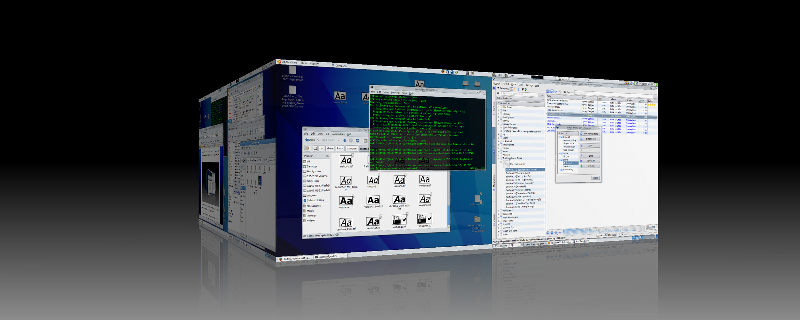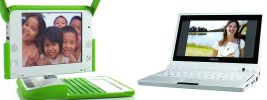Let me start by announcing that I feel 2007 was a fantastic year for Linux. On a personal level, I saw it progress from something that I couldn’t quite get along with to become my full-time operating system. I’ve watched numerous distributions and applications spawn, plenty blossom and some die.
Strong releases from all flavours of Linux
*ubuntu — as mentioned above — has had another awesome year. Two superb major releases, a thousand speciality-based spin-offs and a great road-map for the future. Considering I was chirping away how Ubuntu wasn’t really consumer ready just over a year ago, it’s great to see this speed of advance.
Fedora gave everybody a surprise — twice — with it’s v7 and v8 releases. Fedora hasn’t been sexy since its first few releases and I, for one, assumed the project was beginning to stagnate like Gentoo has, but thanks mainly to their new emphasis on artwork, polish just drips from every corner of the current releases.
Mandriva — another fallen knight of the old era — has replicated what Fedora game-plan, polishing up its brand by adding considerable effort to its outward appearance. It has also been the basis for several other distributions.
The smaller distros have also seen a great year with Sabayon, Mint, SimplyMEPIS (new release just out), Puppy and PCLOS all having stonking years, although PCLOS has been kind of quiet for some time.
Hardware support
2007 saw driver support go through the roof. This subject always depends on the person but in 2006 and before I always had a fairly significant piece of hardware cause issues on my main system while all the smaller things worked flawlessly. This year, I’ve been chucking webcams and printers and Freeview TV USB sticks at distributions and they’ve managed (on the whole) to just work.
The long-running demand for working graphics drivers also seems to have reached nVidia and AMD/ATI, as they started improving their driver support to a level where things work — and about damned time too. The best thing is they’re getting noticeably better with each release.
Applications galore
There has been so much progress in all areas of Linux over the year that it makes picking out just a couple quite a hard task. However, I would probably have to say that improvements in Beryl/Compiz/Compiz fusion this year are what made my move to Linux such a pleasure. The wobbly-windows and water effects might be a waste of CPU cycles, but they’re miles ahead of the Vista graphical bloat.

Coming in a close second is WINE — finally at the stage where I can use it to run most of my Windows apps I just can’t relinquish — save a few — even some of the games, making the more painful migrations much more bearable.
With the imminent release of KDE4, it looks like 2008 might be year of the applications.
Budget, compact and integrated solutions

Who would have thought there would be so much going on with extreme-budget systems this year? We’ve had the OLPC project launch and start its give-one-get-one promotion. And then ASUS came from nowhere to flood the low-end notebook market with it’s extremely cheap and extremely cheerful Eee PC laptop
Many companies are shipping wildly cheap (at the $99 mark) desktop machines armed with Linux getting thousands, if not millions of users familiar with Linux.
Not a good year for the competition
Window’s and even OSX had pretty bad years with both systems making it onto PCWorld’s list of The 15 Biggest Tech Disappointments of 2007. Now I don’t count PCWorld as the biggest authority of what’s hot, but they’re certainly not wrong in pointing out that a lot of people were severely let down by the advances (and regressions in some places) of their OS, some hanging onto the remnants of XP and Tiger until something better comes along.
And please remember that these updates are the best people are going to see from Windows and OSX for years (service-packs and bug-fixes aside), while Linux keeps powering on with its regular incremental updates and significantly more frequent major versions. Considering what Linux has done this year, by the time the next version of Windows ships, Linux will be at a completely new level of performance, stability and usability.
What’s to come and how long until we hit critical mass?
Massively improved audio through PulseAudio, KDE4 in all its sexiness, hopefully an improved [Open]Office suite, some more commercial games, Amarok 2 and hopefully some better OEM support to increase the uptake through new PC sales.
Is 2008 Linux’s year? Hell, for me 2007 was Linux’s year (!!) but I’m not an average person. Critical mass is a really hard thing to predict because there are just so many different markets (eg: enthusiasts, complete novices, gamers, designers) and therefore each person has a different set of requirements.
The way I see it, Windows is a sinking ship. Vista is, to most people, too poor an upgrade from XP so Linux either needs to step up to take people on-board… or Apple will. Hopefully the extremely low price point of Linux machines will grab shopper’s attention but we need more devices like the Eee PC to successfully break through.
But as ever, this is just my take on things. Do you feel Windows is going to keep it’s dominance? If you’re not already, do you see yourself switching to Linux in the future and what flavour do you have your eye on? And if you’ve been using Linux for some time, what represents its proudest moment in your mind?